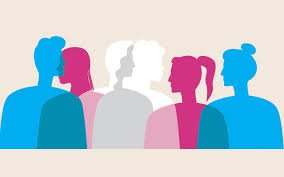
The world of modern relationships is evolving, and trans-inclusive dating has emerged as a crucial topic in fostering equality and acceptance. While society has made strides toward inclusivity, transgender individuals still face unique challenges in the dating landscape. By exploring these barriers and identifying actionable solutions, we can create a more equitable and supportive dating culture.
What Is Trans-Inclusive Dating?
Trans-inclusive dating refers to forming romantic relationships with transgender individuals, respecting their identities, and dismantling prejudices. It promotes inclusivity in a way that challenges traditional norms and broadens our understanding of love and connection.
Understanding the Barriers in Trans-Inclusive Dating
Stereotypes Impacting Transgender Relationships
Misconceptions and stereotypes often create barriers for transgender individuals in romantic contexts. These biases, rooted in outdated societal norms, hinder the acceptance of inclusive relationships.
Disclosure in Inclusive Relationships
For transgender individuals, disclosing their identity can be both a vulnerable and empowering experience. Fear of rejection or misunderstanding often complicates this process, especially on dating platforms where initial impressions matter most.
Safety Concerns in Transgender Dating
Safety is a persistent concern for transgender individuals, who are disproportionately affected by harassment and discrimination in both online and offline settings. These risks make it imperative to prioritize protective measures within dating spaces.
Insights into Dating Preferences and Inclusivity
Statistics on Trans-Inclusive Dating Trends
Recent studies show that only 12% of cisgender individuals are open to dating someone who is transgender. This limited openness underscores the importance of education and awareness:
- Heterosexual individuals displayed the least inclusivity, with only 3.3% of straight men and 1.8% of straight women considering trans partners.
- While higher among queer individuals, even 29% of lesbians and 48% of bisexual people excluded transgender partners from their dating pool.
Factors Influencing Inclusivity in Dating
- Education: Higher education levels are often associated with increased openness to inclusive relationships.
- Age: Older generations show greater inclusivity, potentially due to broader life experiences.
- Cultural and Religious Beliefs: Strong adherence to traditional or religious norms can negatively impact acceptance of trans-inclusive dating.
Pathways to Fostering Inclusive Dating Spaces
Education as a Foundation for Change
Awareness campaigns and educational resources, such as those provided by GLAAD and Trans Lifeline, are key to reducing biases and fostering empathy in relationships.
Improving Online Dating Environments
Dating platforms have a responsibility to create safer and more inclusive experiences. Apps like HER and OkCupid have set examples by adding features to support diverse identities, but ongoing efforts are needed to combat harassment.
Encouraging Open Dialogue in Relationships
Effective communication is the cornerstone of any healthy relationship. Honest and empathetic conversations can address misunderstandings and build trust, particularly in inclusive dating.
Highlighting the Role of Synonyms in Trans-Inclusive Dating
To maintain readability and avoid over-optimization, this article incorporates related phrases, such as:
- Inclusive relationships
- LGBTQ+ dating experiences
- Gender diversity in dating
- Equality in romantic connections
These terms ensure a balanced distribution of keywords while keeping the focus on the topic’s core message.
Frequently Asked Questions About Trans-Inclusive Dating
What does trans-inclusive dating mean?
It involves forming relationships with transgender individuals based on mutual respect, understanding, and acceptance.
How do societal norms impact inclusive dating?
Traditional values and stereotypes often perpetuate biases, making it harder for transgender individuals to find acceptance in relationships.
What role do dating platforms play in fostering inclusivity?
Platforms like HER and Lex promote inclusivity through features that support diverse identities, but they must also address issues like harassment and bias.
How can education help in reducing biases in dating?
Learning about transgender experiences helps challenge stereotypes and encourages empathy in romantic contexts.
What safety concerns do transgender individuals face in dating?
From harassment to physical harm, safety concerns remain a significant barrier, highlighting the need for protective measures in both online and offline dating spaces.
Conclusion: Building a Culture of Inclusive Dating
The journey toward a culture of trans-inclusive dating requires collective effort. By addressing misconceptions, promoting education, and creating safer dating environments, society can pave the way for relationships that are inclusive, respectful, and fulfilling for everyone. Fostering such equality in romantic spaces not only benefits transgender individuals but enriches the overall landscape of modern dating.
For more information:
- GLAAD: Resources on Transgender Rights
Visit GLAAD for comprehensive resources on transgender rights and advocacy. - Planned Parenthood: Gender Identity Resources
Explore Planned Parenthood’s resources for information on gender identity and related health topics. - Trans Lifeline: Support and Advocacy
Reach out to Trans Lifeline for support and advocacy services for the transgender community.